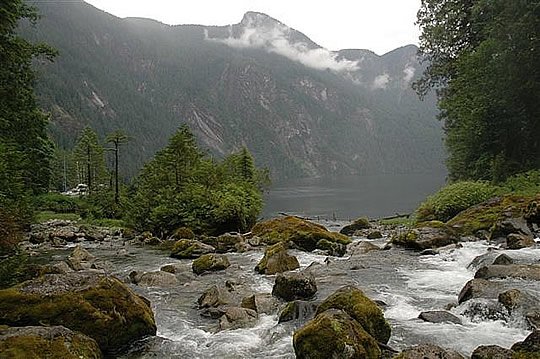Tides are the result of the interaction of gravitation pull between the earth, the moon and the sun. If you’ve done any boating in this part of the world you will know that knowing what is going on with the tides is critical to planning a successful trip. Tides are one of the essential areas of knowledge for boaters. Know your tides or risk getting your boat stuck in the mud or damaged by rocks.
Tide times and heights can vary throughout the month so you can be easily caught out if you haven’t checked them. A passage may have plenty of water one day and then on the next at the same time may be quite different. Tides can be accurately predicted up to a year in advance and tide tables are widely available both online and in print.
Do you know your vessel’s draft? It’s a good idea to make a permanent note of the draft somewhere near the helm so there is no confusion for whoever is driving the boat.
What you need to know about tides from Nanaimo:
- Check a tide table before going out on the water.
- Learn how the tide affects your boating environment, especially channels and water levels. Be aware of your surroundings and the tide’s direction.
- Learn how to read which way the tidal current is moving in the water.
Just a tide table on its own isn’t enough information. You will still need the relevant chart and don’t be shy about asking for local knowledge. A good example of where tide information alone isn’t sufficient is for example if the tide moves through a small channel where the surge of water will cause much rougher conditions. For some channels in British Columbia, tidal changes make the water so fast-moving you will need to plan your passage completely around the direction of the tidal flow. The opposite of too much water is too little, and so if the tide is going out of course you will want to be aware of when your boat could be grounded but also if there are any large rocks or other large sunken objects which need to be avoided.
The scenery from Nanaimo is spectacular and as part of owning a boat, you will want to spend time ashore exploring. Before you jump into your tender to go ashore check the tides. The coast can appear to be a vast natural playground but the tide can come in quickly and then not only does your walking back to your dinghy become wading through water, but more worryingly you could find that the surge of water through narrow channels makes getting your dinghy back to the boat a real problem. Our coastline of steep cliffs may also mean going inland is not an option.
If you’re already out on the water it is easy enough to work out what is happening with the tides especially if you are close to the coast. If you look at the water and the shore the tidal current is visible as the water flowing in towards or ebbing away from the land. It looks like the ocean is chasing itself onto or away from the shore.
Interesting (geeky) Tide Facts
- Currents created by incoming and outgoing tides can be dangerous for swimmers.
- The Astronomer Seleucus of Seleucia was the first scientist to identify that tides were caused by the moon in 150 BC.
- The moon is the most relevant factor in the creation of tides (the sun’s gravitational force on the earth is less than half of the moon).
- The most dramatic tides happen at the times of the new moon and the full moon.
- In most geographical areas, because of the movement of the moon and sun, tide changes happen twice per day so the time between high and low tides is around 6 hours.
- The wavelength of a tidal wave is around 12,430 miles.
- The tidal cycle 24 hours and 50 minutes.
- Some of the highest tides in the world are in Nova Scotia, in the Bay of Fundy, with a difference of about 53 feet between high and low tide.
- Spring and neap tides – the moon exerts the largest influence on tides but when the sun and moon are aligned (during a full or new moon) the sun enhances the moon’s gravitational pull creating higher tides than usual. These are called spring tides and they have the greatest depth range between high and low water. Neap tides have less variation so there is less change in water height.
As always at Nanaimo Boatyard and Chandlery we are always happy to share our knowledge about everything to do with boating and enjoying the local area. Please do talk to us.
News and Updated
Twitter : https://twitter.com/NYS_StonesBYard
Pinterest : https://www.pinterest.com/nanaimoboatyard/
Facebook : https://www.facebook.com/StonesboatyardLtd

No comments:
Post a Comment